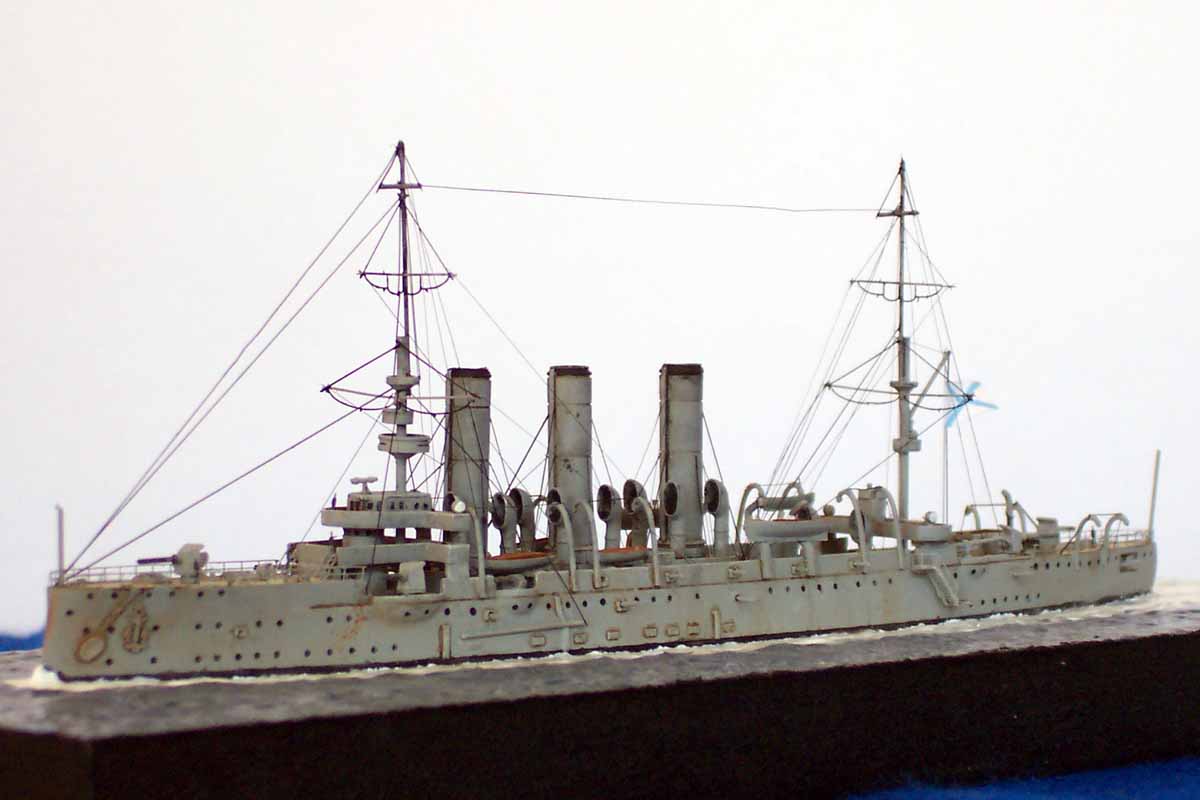by Rob Kernaghan

1/700 Tsarist Navy Avrora (Combrig)

Tsarist Navy Avrora
Avrora is the 1/700 Combrig kit, built to represent her ca 1908-09, showing her before her rebuild. Although she survives in preservation, any photographs of her current appearance are unreliable for building a model of her in service.
The model was built in the course of around a week. In addition to what’s in the box, she has brass rod masts, PE from WEM’s Askold and Tiger frets and various odd bits of Evergreen strip.
I fully assembled her, leaving off just guns and boats, then sprayed her light grey. The rest of her paintwork was all done wet-on-wet. After letting the grey settle for an hour or two, she was then given a light wash of raw umber oils, streaking the hull and into the caulking on her deck. The wash was then wiped back with a broad, dry and soft brush to leave hull streaking.
Once the wash was cleaned up, the deck was dry-brushed with a single, heavy, coat of WEM teak.
Scuttles and windows were then picked out with thinned-out lamp black oil paint. The same lamp black was applied to her funnels and masts, but using a cotton bud rather than a brush. The inside of the vents received lamp black shading.
Steel decks were then painted with a very scrubby red-lead colour, allowing the grey to shine through slightly for a worn appearance.
She was then dry-brushed with WEM’s AP507C (an incredibly useful dry-brush highlighting colour) and Rowney burnt sienna acrylics.
At this point, her boot strip was added from black tape and she was fitted to her display base.
She was then left to dry overnight, then her seascape was made up with a rough coat of acrylic gel which I allowed to dry. The water was then painted in a blue/grey mix of artists’ acrylics with a white wake. After allowing this to dry a coat of PVA glue which dries both clear and very glossy was painted on, and over the lower edge of the hull. This seals in the paint, the boot strip and gives a “wet” appearance to both the ships’ hull and the “water”.
Following this she was rigged with stretched Tamiya sprue, then armed and the boats were stowed.
Having got all this done, she flies an ensign of paper and Humbrol paint.
About a week after finishing her, I was rearranging my cabinet display and I managed to dismast her. The photographs show her following a restoration. The good thing about brass masts is if they break, the joints break, not the spars themselves.
All in all a fun project, from a relatively cheap kit.
Thanks to Jim Baumann for the photographs.
References: Siegreid Breyer, plus photographs from various books.
